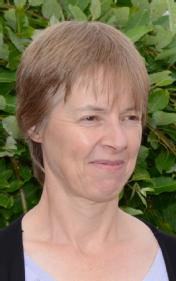Professor Julie Staunton
As well the inaugural director of the HetSys postgraduate training centre at Warwick, Julie Staunton is a professor in the Physics Department and currently heads its Theoretical Physics Group. This Group has a breadth of interests in non-equilibrium biophysics and other ‘soft matter, the dynamics of complex fluids, molecular and materials modelling, quantum transport and quantum information science.
The main theme running through Julie’s own research is a description of materials via a careful account of their electronic "glue". This requires high performance computing techniques to apply quantum theory. The main focus is on computational magnetic materials modelling for the sub-nanoscale. Techniques are based on Density Functional Theory combined with Disordered Local Moment theory which her group and collaborators have developed. Input for longer length scale atomistic models is produced. Current projects include those on permanent magnets, spintronics, complex magnetic ordering, multicomponent alloys, and also materials for energy efficient refrigeration. A strength of the work is that it is typically 'first principled' so that many aspects can be tested in quantitative detail by a range of experimental measurements. Her group collaborates with many others both nationally and internationally.
How did your journey into science begin?
 |
I enjoyed maths at school and even then was aware of environmental challenges etc. I wanted to learn more about the causes and was very lucky to be taught physics at secondary school by an inspirational female teacher. I joined Warwick in 1984 as a lecturer following post-doctoral work at Imperial College, London and post-graduate study at Bristol University. Along the way I have received a lot of support to develop my career and feel lucky to have such a rewarding job. Whilst I thoroughly enjoy trying to unravel the reasons why materials behave the way they do in my research, it is also a great time to be teaching physics at University owing to the flourishing state of the subject as demonstrated by recent headline discoveries. |
What is your favourite thing about your research?
Two things actually: In depth discussion about research questions with co-workers - PGs, postdocs, other academic colleagues from many different countries. Working on a theory and writing code to implement it to get numbers out to compare with experiment.
Why do you think it is important to highlight women in science? What does it mean to you?
We need to encourage more women to follow careers in science. Expanding the diversity of people discussing science leads to new, more flexible ways of thinking. I have seen this at first hand when visiting places where there is a greater proportion of women scientists than here in the UK.

